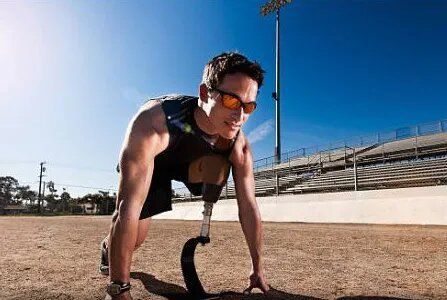Your doctor may recommend knee prosthesis if you have severe destruction to your knee and/or the upper or lower leg bones that connect to your knee. Following surgery, you'll need to adjust to life with prosthetic material. Here's what you need to know.
Knee Prosthesis Systems
Knee prosthesis has come a long way over the years. The type of knee prosthesis your surgeon will use depends on a number of factors. For example, if the upper or lower part of your leg is removed, you'll need a three-component knee prosthesis to regain mobility.
Other factors that play a role in the type of knee prosthesis your doctor selects include your weight, age, health status and desired activity level. Communicate your needs to your surgeon to help choose the best type of knee prosthesis to fit your needs.
Physical Therapy
Physical therapy is part of recovering from knee replacement and is necessary for you to get used to your prosthetic knee. It will help you heal, regain mobility, improve strength and return to your regular daily activities. Your physical therapist will guide you through safely performing the exercises, which typically include leg raises and supported knee bends.
Your doctor may also recommend that you walk for 20 to 30 minutes and perform certain exercises at home on your own.
Aches, Pains and Stiffness
Now that you have a prosthetic knee, you'll notice that your muscles and joints feel different. They need time to strengthen and adjust to the prosthesis. You may feel as if your muscles are tight and stiff. They may also feel weak.
Over the course of the first year, you can expect the stiffness and aches to subside. However, you shouldn't experience severe soreness. If you do, make sure to contact your doctor to rule out any serious underlying conditions.
Changes in Sensation
With part of your knee removed, changes in sensation are inevitable. Most commonly, you may experience numbness or a sensation of pins and needles. Know that this is normal and not anything to worry about.
You may also find that the skin around the prosthetic knee feels warm to the touch. This too is normal and to be expected. Changes in sensation often subside over the course of several months.
However, some knee prosthesis patients report changes in sensation lasting for several years, typically after rigorous physical activity. Stretching well and warming up prior to exercise may help reduce these sensations. You may also want to consider taking an ice pack with you to the gym and icing your knee after you exercise.
Weight Fluctuation
Knee prosthesis patients are often surprised to find that they gain weight following total knee replacement. Weight gain is a common side effect due to reduced activity levels. The average knee prosthesis patient gains about 15 pounds within the first two years.
You can minimize weight gain by staying active, even during the initial recovery period. Follow your doctor and physical therapist's advice to prevent injury. You should know that gaining weight places additional stress on the prosthesis, so minimizing extra pounds is important to the performance of your prosthetic knee.
Sounds
When you walk, you may notice that your prosthetic knee makes sounds as you move. These are commonly described as popping or clicking sounds. These sounds aren't usually loud and are typically normal for your prosthetic device. Contact your doctor if the sounds are loud or unusual, to make sure your prosthesis is working as intended.
There's no manual for total knee replacement. It will take time and patience to adjust to your prosthetic knee, but knowing what to expect will better prepare you for what's ahead. Contact
Huse Artificial Limb & Brace if you have questions about prosthetic knees.
















